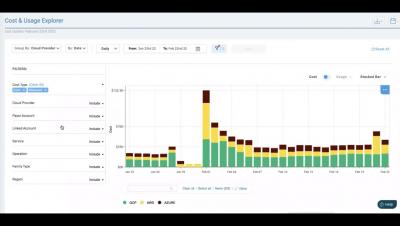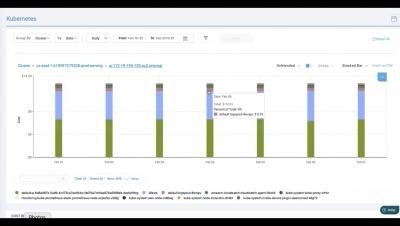Operations | Monitoring | ITSM | DevOps | Cloud
June 2022
Cloud Cost Dashboard Demo
Cloud Savings Recommendations Demo
Multicloud Cost Management
More enterprises are adopting cloud computing to ensure that they can accelerate innovation, stay competitive, and enjoy cost savings. This trend has only increased in the last two years with the rise of remote work necessitated by the COVID-19 pandemic. With the rise of cloud adoption, multi-cloud and hybrid cloud deployments are increasing in popularity as well. According to a Gartner survey, 81% of survey respondents are using two or more cloud providers.
Anodot Supports the FinOps Foundation Mission
As a member of the FinOps organization, Anodot is excited to sponsor the upcoming FinOps X event in Austin, TX. Anodot’s mission has always been to help organizations solve one of the most recognized challenges associated with public cloud adoption — cost control and optimization. Every feature of our Anodot cloud cost management platform has been built by taking a core FinOps market concern and working backward to deliver a capability that fills that need.
Accurately Forecasting Cloud Costs
Most companies today have a “cloud first” computing strategy. According to Foundry’s April 2022 report outlining their 2022 Cloud Computing research, 92% of businesses globally have moved to the cloud. What’s more, the percentage of companies with most or all of their IT infrastructure in the cloud is expected to leap from 41% today to 63% in the next 18 months. As companies move more workloads onto various cloud platforms, cloud budgets continue to increase.
Multicloud Cost Reporting Demo
Kubernetes Pod Overprovisioning Demo
Best Practices for Maximizing Your Kubernetes ROI
96% of companies now use or are in the process of evaluating Kubernetes. As the maturity and complexity of Kubernetes environments grow, costs quickly spiral out of control when an effective strategy for visibility and optimization is not in place.
Understanding Kubernetes Cost Drivers
Optimizing Kubernetes costs isn’t an easy task. Kubernetes is as deep a topic as cloud (and even more complex), containing subtopics like: That’s a lot for a busy DevOps team to understand and manage, and doesn’t even consider that line-of-business stakeholders and finance team members should have some understanding of each cost driver’s function and importance to contribute to a successful FinOps Strategy.
Kubernetes Cost Optimization
As the complexity of Kubernetes environments grow, costs can quickly spiral out of control if an effective strategy for optimization is not in place. We’ve compiled expert recommendations and best practices for running cost-optimized Kubernetes workloads on AWS, Microsoft Azure, and Google Cloud (GCP).








